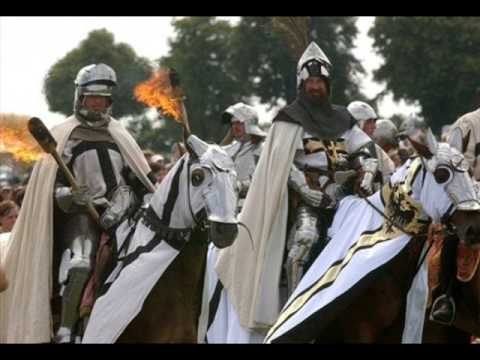
September 7th 1191 was a key meeting between Richard the Lionheart of England and Saladin’s larger Ayyubid army. After his successful capture of Acre in the Third Crusade Richard demonstrated his strategic nous. He realized he needed the port of Jaffa. Assembling his forces he began to march down the coastal plain of Palestine, then known to the Franks and Normans as Outremer.
Richard understood that the advantage for the Arab armies lay with their light cavalry. If they were given room to maneuver they could make mincemeat of the heavy Norman cavalry and Infantry. So he cautioned discipline above all. On the march his men were subjected to relentless attacks by the horse archers seeking to disrupt the Frankish formations. By keeping to the sea Richard could supply his men from his fleet, and did not have to risk parties of men foraging inland.
When they got as far as Arsuf Saladin understood that their target must be Jaffa. He elected to press his advantage before the Western armies secured the port city.
Richard placed his back to the sea, protecting his baggage train with his heavy cavalry. He arranged his infantry inland of the cavalry. There he demanded the heavy Western troops absorb the skirmishing attacks of the Arabic and Turkic foes.
Saladin concentrated his attacks on the rear of Richard’s column, in the hope that he could split the rearguard from the centre and the van. The Hospitaller crossbowmen who held the very rear of the column were marching backwards while loading and firing crossbows. Unsurprisingly their lines began to fray. The Bedouin and Nubian infantry began to penetrate their lines and break them up. Any gap in the line was exploited by the rapidly charging horsemen armed with compound bows and scimitars.
Richard had to delay his response until the very last moment, when the horses of the attackers were tired and when they were fully committed to the attack. Only a head to head charge could favour the western knights. At last the Hospitaller knights of the rearguard could take no more and charged to defend their infantry. French contingents followed and Richard realized that it was now or never. He ordered his cavalry to charge.
On both flanks the knights smashed the Ayyubid cavalry to smithereens. Their centre fell back to do what the Arabs always did. Their intention was to feign retreat and then round on the Franks once their charge was strung out. Richard was all too aware of this practice so he assembled his vanguard cavalry and launched a second charge himself. His timing was immaculate and he smashed into Saladin’s cavalry just as they turned to stand again.
Richard then succeeded in reassembling his scattered cavalry, reforming and mounting a third charge. This was enough for the Muslim forces and they melted away into the forest of Arsuf and the hills behind. It was a complete rout of a larger Islamic army by Richard and his forces. Arsuf cemented his reputation as a great war leader, and of course gave him the massive chip on his shoulder described by Brian Bilston in the poem below.
Richard was unable to move inland and retake Jerusalem, but he had sufficient clout to negotiate a truce from a position of power. Saladin provided access to the holy places of Jerusalem and nearby shrines to Christian pilgrims and Richard could sell this as victory.
Richard the Lionheart; by Brian Bilston
He had the heart of a lion.
He was as strong as an ox.
But he had the liver of a goat
and the stomach of a fox.
The doctors were sent for
to allay the king’s fears,
but they were confounded
by his cauliflower ears
and the crow’s feet beneath his eyes
which shed crocodile tears.
Was he animal, vegetable or mineral?
They had no idea, but growing bolder
the doctors operated on the king
and removed the chip from his shoulder.
-=o0o=-
This site is available for free and I make no money from any ads you see here. If you would like to show your appreciation feel free to leave a comment or you can buy me a coffee! http://buymeacoffee.com/DonalClancy

